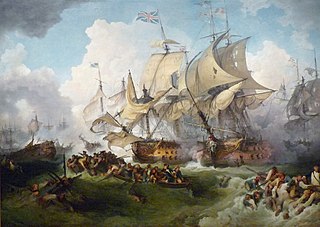
The Glorious First of June, also known as the Fourth Battle of Ushant, was the first and largest fleet action of the naval conflict between the Kingdom of Great Britain and the First French Republic during the French Revolutionary Wars.

Admiral of the Fleet Richard Howe, 1st Earl Howe,, was a British naval officer. After serving throughout the War of the Austrian Succession, he gained a reputation for his role in amphibious operations against the French coast as part of Britain's policy of naval descents during the Seven Years' War. He also took part, as a naval captain, in the decisive British naval victory at the Battle of Quiberon Bay in November 1759.

Admiral of the Blue Edward Boscawen, PC was a British admiral in the Royal Navy and Member of Parliament for the borough of Truro, Cornwall, England. He is known principally for his various naval commands during the 18th century and the engagements that he won, including the siege of Louisburg in 1758 and Battle of Lagos in 1759. He is also remembered as the officer who signed the warrant authorising the execution of Admiral John Byng in 1757, for failing to engage the enemy at the Battle of Minorca (1756). In his political role, he served as a Member of Parliament for Truro from 1742 until his death although due to almost constant naval employment he seems not to have been particularly active. He also served as one of the Lords Commissioners of the Admiralty on the Board of Admiralty from 1751 and as a member of the Privy Council from 1758 until his death in 1761.

Louis-Thomas Villaret de Joyeuse was a French admiral.

Admiral Sir William Cornwallis, was a Royal Navy officer. He was the brother of Charles Cornwallis, 1st Marquess Cornwallis, British commander at the siege of Yorktown. Cornwallis took part in a number of decisive battles including the siege of Louisbourg in 1758, when he was 14, and the Battle of the Saintes but is best known as a friend of Lord Nelson and as the commander-in-chief of the Channel Fleet during the Napoleonic Wars. He is depicted in the Horatio Hornblower novel, Hornblower and the Hotspur.

Charles Holmes was a Rear Admiral in the British Navy during the Seven Years' War, and was Wolfe's third-in-command during the capture of Quebec in 1759. He is also known for leading a British squadron up the River Ems in 1758, leading directly to the Capture of Emden.
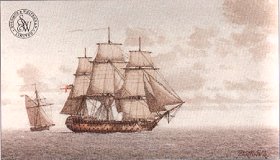
HMS Edgar was a 74-gun third-rate ship of the line of the Royal Navy, that saw service in the American Revolutionary, French Revolutionary and Napoleonic Wars. Launched in 1779, she fought in the battles of Cape St Vincent and Copenhagen, two of the major naval engagements of the wars.

Jean-Baptiste Philibert Willaumez was a French naval officer and nobleman who served during the French Revolutionary Wars and Napoleonic Wars. Willaumez joined the French Navy at the age of 14, and proved to be a competent sailor. Having risen to the rank of pilot, he started studying navigation, attracting the attention of his superiors up to Louis XVI himself. Willaumez eventually became an officer and served under Antoine Bruni d'Entrecasteaux in his expedition to rescue Jean-François de Galaup, comte de Lapérouse and explore the Indian Ocean and Oceania.

Alcide was a 64-gun ship of the line of the French Navy, launched in 1742. The captain of the vessel was Toussaint Hocquart, for the re-enforcement campaign that was sent to Canada in May 1755.
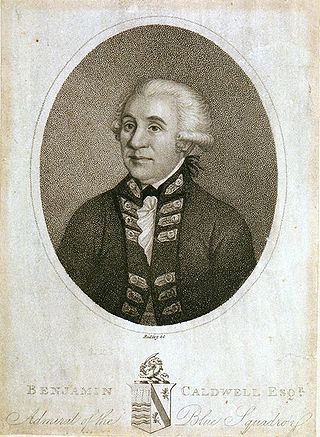
Admiral Sir Benjamin Caldwell, was a senior and experienced British Royal Navy officer of the eighteenth century. His many victories and achievements were overshadowed by his acrimonious departure from the Navy during the French Revolutionary Wars after highly publicised disputes with Admiral Lord Howe and Admiral Sir John Jervis, over perceived slights against his name following the battle of the Glorious First of June in 1794. As a result of these disputes, Caldwell was overlooked for future employment and only received recognition for his service from King George IV months before his death.

Pierre Jean Van Stabel was a French naval officer and rear-admiral, famous for his role in the Glorious First of June.

The siege of Louisbourg was a pivotal operation of the Seven Years' War in 1758 that ended the French colonial era in Atlantic Canada and led to the subsequent British campaign to capture Quebec in 1759 and the remainder of French North America the following year.

HMS Dunkirk was a 60-gun fourth-rate ship of the line of the Royal Navy, built by Edward Allin at Woolwich Dockyard to the draught specified by the 1745 Establishment as amended in 1750, and launched on 22 July 1754.

Hugh Downman was an officer of the Royal Navy who saw service during the American War of Independence and the French Revolutionary and Napoleonic Wars, eventually rising to the rank of admiral.

The Third Battle of Ushant or the action of 20–21 April 1782 was a naval battle fought during the American Revolutionary War, between a French naval fleet of three ships of the line protecting a convoy and two British Royal naval ships of the line off Ushant, a French island at the mouth of the English Channel off the northwesternmost point of France. This was the third battle that occurred in this region during the course of the war.

Savage Mostyn was an officer of the Royal Navy who saw service during the War of the Austrian Succession and the Seven Years' War. He embarked on a political career, and was a Member of Parliament, Comptroller of the Navy, and one of the Lords of the Admiralty.
The action of 22 January 1783 was a single-ship action fought off the Chesapeake Bay during the American War of Independence. The British frigate Hussar, under the command of Thomas McNamara Russell, captured the French frigate Sybille, under the command of Kergariou-Locmaria. The circumstances of the battle included controversial violations of accepted rules of war regarding the flying of false flags and distress signals.

Rear-Admiral John Leveson-Gower was a Royal Navy officer and politician from the Leveson-Gower family. As a junior officer he saw action at the Battle of Lagos in August 1759 during the Seven Years' War. As captain of HMS Valiant he was present at the Battle of Ushant on 17 July 1778 during the American War of Independence. He went on to be a junior Lord of the Admiralty and then First Naval Lord. He also sat as Member of Parliament for several constituencies.
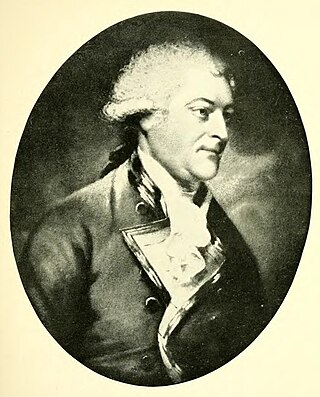
Admiral Robert Linzee was an officer of the Royal Navy who served during the American War of Independence, and the French Revolutionary and Napoleonic Wars.
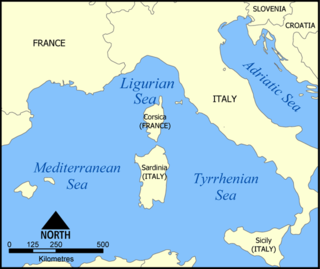
The Battle of the Hyères Islands was a naval engagement fought between a combined British and Neapolitan fleet and the French Mediterranean Fleet on 13 July 1795 during the French Revolutionary Wars. Since the start of the war in 1793 the French fleet had suffered a series of damaging defeats and was restricted to limited operations off the French Mediterranean Coast in the face of a determined allied blockade. The French fleet, commanded by Pierre Martin, had sought to test the blockade during 1795, and in March had been caught by the British, under William Hotham, in the Gulf of Genoa. At the ensuing Battle of Genoa two French ships were captured before Martin was able to retreat to a safe anchorage.




















